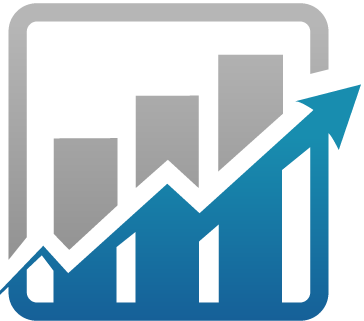How Telecom service providers are using data analytics to improve their services?
November 05, 2017
With the arrival of various instant messaging apps, the telecom industry is facing a huge hit when it comes to the revenue aspect. Most of the revenue earned from the SMS is now nullified. In a situation that seemed like a dead end, data analytics has come to their rescue. The existence of data analysis in telecom industry has been there for some time but a sudden boost has been recently seen in the popularity of it because of the amazing benefits.
Current glitches:·
- The biggest bottleneck faced by the telecom industry is the call drop rate. Call drop rate is the number of calls disconnected without the initiation of any party, per hundred calls.
- The limited availability of bandwidth for setting up a network leads to a lot of competition. Also, this limited bandwidth puts a limitation on the number of subscribers that can be serviced in a particular area at a time.
- The demand for high speed data transfer over limited bandwidth is also a huge limitation. This results in slower downloads and uploads.
Data analytics in telecom industry:
With the immense popularity that big data has been gaining these days, its entry to telecom wasn’t surprising. Using the enormous amount of data available with us, it is amazing how a little compilation can help the industry immensely. The major areas in which telecom industries put big data to use are:
De-cluttering – By compiling the data from various base stations, rush hours for a particular area can easily be calculated. When the network provider is aware of the times when their network is most congested, alternative solutions can be planned out for it.
Customer loyalty, acquisition and retention – The key part of any business is its customer and customer satisfaction is the thing that ultimately generates revenue. By using data analytics, the network providers can now access the details of every one of their users and determine their preferences in order to come up with plans that lead to customer satisfaction.
Call plans – The various calling plans available at the market today are all based on models designed with the help of data analysis. Understanding the different types of customers and their needs is the basis of designing customized plans.
Network performance optimization – The efficiency of a network can be increased considerably with the help of data analytics. In order to serve the customers in best possible way, the network needs to be optimized.
Failure prediction – Knowing the success rate of a particular plan in advance is always a great advantage. Using big data, the success or failure of a plan can be accurately predicted hence reducing the cost of application to a huge extent.
Security – No matter how neat the world out there is, the probability of fraud cannot be ignored. Even with the best possible security in place, there can be loopholes causing damage to the network. Using data analysis, these loopholes can easily be detected hence reducing the chances of fraud and security breach.
Event based marketing campaign - Depending on the events currently in trend, different plans are designed to attract customers into choosing them as their (customer) network provider. These current market trends are based on the results from analysis of big data. The accuracy of the analysis is directly proportional to the amount of data used in analysis
Catering to customer satisfaction:
Various uses of data analytics today, help in determining the keys to customer satisfaction. There are several types of data available with the telecom industry that can be used productively. Some of the main areas of data collection are:
- Customer demographic (age, marital status, etc.)
- Sentiment analysis of social media
- Customer usage patterns
- Calling-circle data
- Browsing behavior
- Support call center statistics
Future enhancement:
Unlike the common perception, using big data isn’t as cumbersome as it sounds. When it comes to the future of it, convergence of cloud with big data is one of the steps that could prove as revolutionary. However, security is a bigger concern when involving cloud because of the number of people that have access to it. People are moving on to internet of things rather than just limiting their network to telecom. Big data can be used to analyse the preferences of the customers but cloud is an important step to make things automated and cater to the needs of a larger customer group. The current challenges faced by big data like storage, applicability, and security are the reason why its use is limited. Converging cloud with big data, to a great extent can solve this problem enabling it to be used in fields currently thought impossible.

